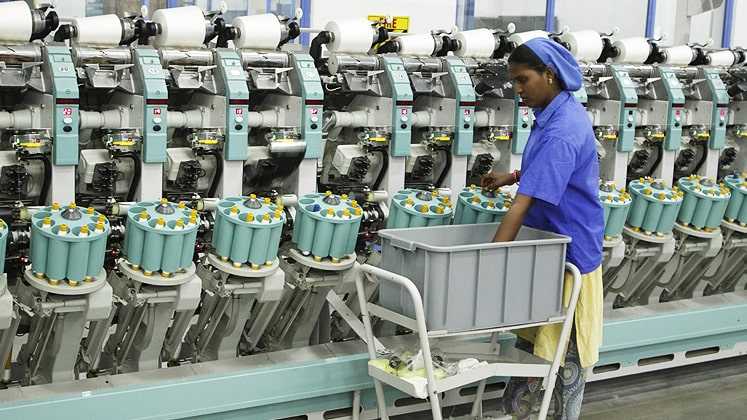
With US $ 2.6 trillion, India is world’s sixth largest economy. Being one of the fastest growing major economies and growth projections, over the medium term, remaining encouraging and optimistic, India has the potential to be a US $ 5 trillion economy by 2025. Various Government agencies and departments as well as trade bodies are geared up to develop a roadmap to achieve this ambitious milestone.
Given the current economic structure, it is expected that the manufacturing sector will contribute US $ 1 trillion towards achieving this objective. Department of Industrial Policy and Promotion (DIPP’s) Working Group has further suggested a three-pillar strategy to achieve the expansion of the manufacturing sector output. Apart from many other sectors, readymade garment (RMG) is also identified as a high-impact sector.
Currently, with the size of US $ 150 billion, Indian textile and apparel industry is targeted to be of US $ 300 billion worth by 2025. Though, in a recent event Smriti Irani, Minister of Textiles, was of the view that industry should not restrict itself to the US $ 300 billion mark, but should look beyond and achieve US $ 500 billion, if not more.
Even the target of US $ 300 billion seems very difficult as export of textile and apparel sector has consistently missed annual targets set by the government in at least previous three financial years, since 2014-15. Out of the total US $ 150 billion, current size of Indian textile and apparel industry, the share of export is around 30 per cent. India’s textile and apparel export was US $ 37.25 billion in the calendar year 2017. During FY18, apparel exports from India fell by 4 per cent to US $ 16.72 billion.
As far as domestic apparel market is concerned, it was estimated at US $ 67 billion in 2017. From last 12 to 13 years, it has grown at a compounded annual growth rate (CAGR) of 10 per cent. Further, it is expected to grow at 11-12 per cent CAGR and reach about US $ 160 billion by 2025. So US $ 300 billion is natural long shot.
Apparel Resources explored Industry and Government official’s recommendations to achieve acceleration in the growth of textile and RMG industry. Need for cooperation among organisations, the government and the industry to project the possibilities of textiles industry to potential investors, efficiency at the global level are the points suggested majorly by the industry. However, there were some negative views too as some felt that looking at the difficult global scenario, it is very hard to grow in exports, especially in apparels.
Sanjay Lalbhai, CMD, Arvind Ltd. insisted on the need for consistently low taxes to be passed on in exports. “There is a need to have a policy framework and an agreement between centre and states that we will comprehensively look at all the taxes which are going into the manufacturing of the entire value chain of textiles,” he said. The industry must focus on its global footprint, in terms of cost-competitive advantage, consistent macro-environments and the utilisation of new technological and business practices.
According to Sachit Jain, Chairman, JMD, Vardhman Textiles Ltd. , the three major areas of focus are importance of an industry-wide upscale, virtual integration and improvement in internal processes; while Prashant Agarwal, JMD, Wazir Advisor Ltd. , had an interesting suggestion. He said “There is a need for four-way strategy model to be adopted – focussing on manufacturing excellence; product diversification and market drivers; modern cluster approach; training and skill development.”
Gautam Nair, MD, Matrix Clothing Ltd., Gurgaon, who is one of the prominent apparel exporters of India, emphasised that exports on textiles must be zero-rated. “Industry needs to move away from small-scale production, and work with key hubs like Tirupur to set up one-stop shops for the industry,” he stressed.
Amitabh Kant, CEO, NITI Aayog is of the view that India needs to focus on large-scale production and enter global value chains through collaborations with international brands. He emphasised on the production of man-made fibres as the way forward for the Indian textile industry. He insisted on creating backward and forward linkages rather than focussing on small-scale units. NITI Aayog has been pushing for technical textiles and it is a major growth area for India. He stated that India hopes to finalise a free trade agreement (FTA) with the European Union and key countries.

Post a Comment